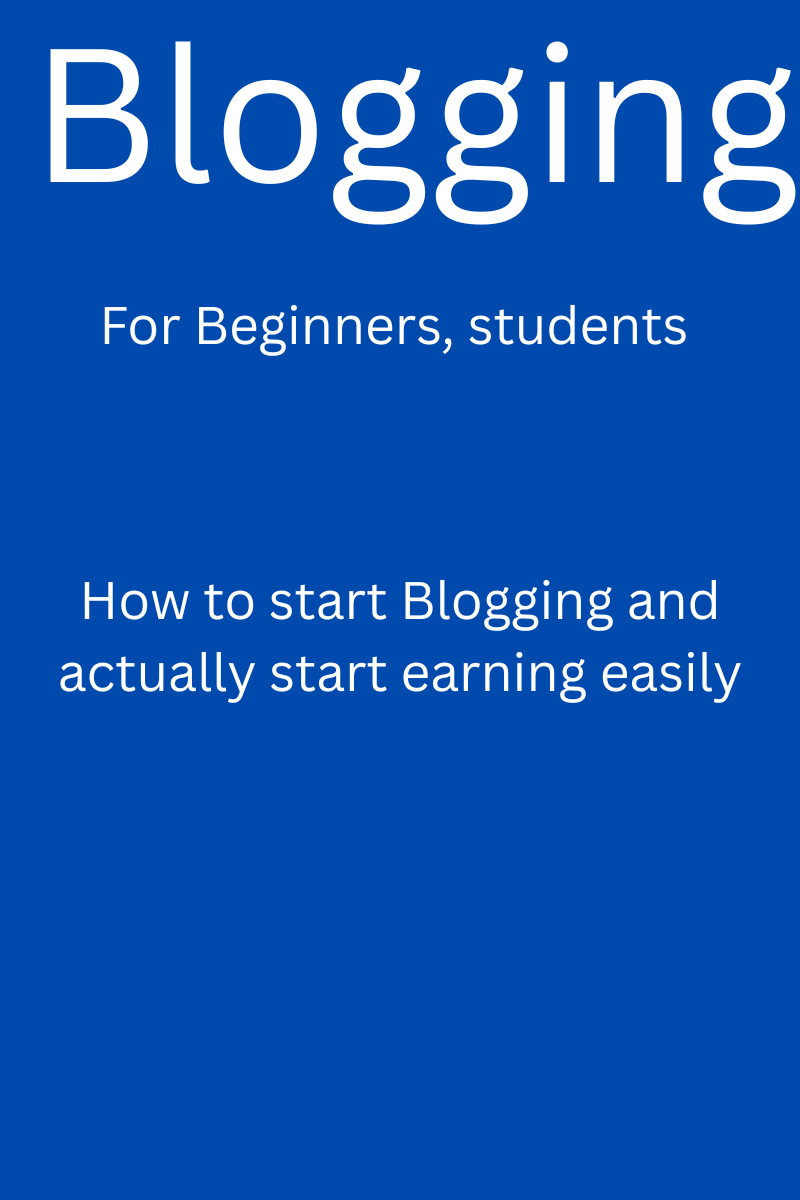
Blogging, to me, is a vibrant blend of storytelling, knowledge-sharing, and creativity, all bundled into a digital form. It’s a space where anyone can craft their voice and share their perspective with the world, whether it’s about personal experiences, hobbies, passions, or professional expertise.
It’s not just about writing—it’s about creating a virtual home for ideas to grow and thrive. A blog can spark conversations, build communities, or even challenge the way people think. It’s like planting seeds of thought across the internet, hoping they’ll bloom in the minds of readers.
But the beauty of blogging isn’t just in sharing thoughts; it’s in the connection it builds. When someone reads your blog and resonates with your words, there’s a unique bridge formed—a kind of understanding that transcends distance and differences

Affiliate marketing is like being a virtual matchmaker for products and consumers! It’s a performance-based marketing strategy where individuals or companies (called affiliates) promote a business’s products or services and earn a commission for every sale or action generated through their referral link.
Here’s how it typically works:
- Affiliate joins a program: Businesses run affiliate programs that affiliates can sign up for.
- Affiliate promotes: The affiliate uses blogs, social media, or other platforms to share referral links for the products or services.
- Users click and buy: When someone clicks the affiliate’s link and completes a purchase (or performs a desired action, like signing up), the affiliate earns a commission.
It’s a win-win strategy! Businesses get increased sales without upfront advertising costs, affiliates get paid for their influence, and consumers discover products or services that match their interests.
What’s fascinating is how versatile it is—some affiliates earn passive income by weaving links seamlessly into their content, while others actively engage their audience to drive traffic and conversions.
Become Successful Learn Affiliate Marketing and start earning money without investment

- Becoming a successful freelancer requires a mix of skill, strategy, and persistence. Here are some tips to set you on the right path:
- Identify Your Skills and Niche Pinpoint what you’re good at and enjoy doing—whether it’s writing, graphic design, programming, marketing, or something else. Define a niche to stand out. For example, instead of being just a writer, you could specialize in tech blogging or SEO content.
- Build a Strong Portfolio Create a collection of your best work to showcase your expertise. If you’re just starting, consider doing small projects or personal assignments to demonstrate your skills.
- Set Clear Goals Decide what you aim to achieve as a freelancer—whether it’s a side hustle or a full-time career. Set financial targets and plan your workload accordingly.
- Network and Market Yourself Use platforms like LinkedIn, Instagram, or Twitter to connect with potential clients. oin freelancing platforms such as Upwork, Fiverr, or Freelancer to find gigs. Attend webinars, workshops, or local events to expand your network.
- Learn to Price Your Services Research market rates for your skills and decide on competitive yet fair pricing. Start with introductory rates if necessary, but don’t undersell yourself.
- Develop Time Management Skills Freelancing often means juggling multiple projects. Use tools like Trello, Asana, or Notion to stay organized. Learn to prioritize tasks and meet deadlines consistently.
- Stay Professional Communicate effectively with clients and set clear expectations. reate contracts to outline terms, deadlines, and payment details. Always deliver quality work—it builds trust and ensures repeat clients.
- Continuous Learning Stay updated with trends and upgrade your skills regularly. Enroll in online courses, watch tutorials, or follow industry experts.
- Manage Your Finances Keep track of your earnings, expenses, and taxes. Consider setting up a separate bank account for your freelance income.
- Be Patient and Resilient Success won’t happen overnight. It takes time to build a client base and reputation. Learn from failures, adapt, and keep improving.